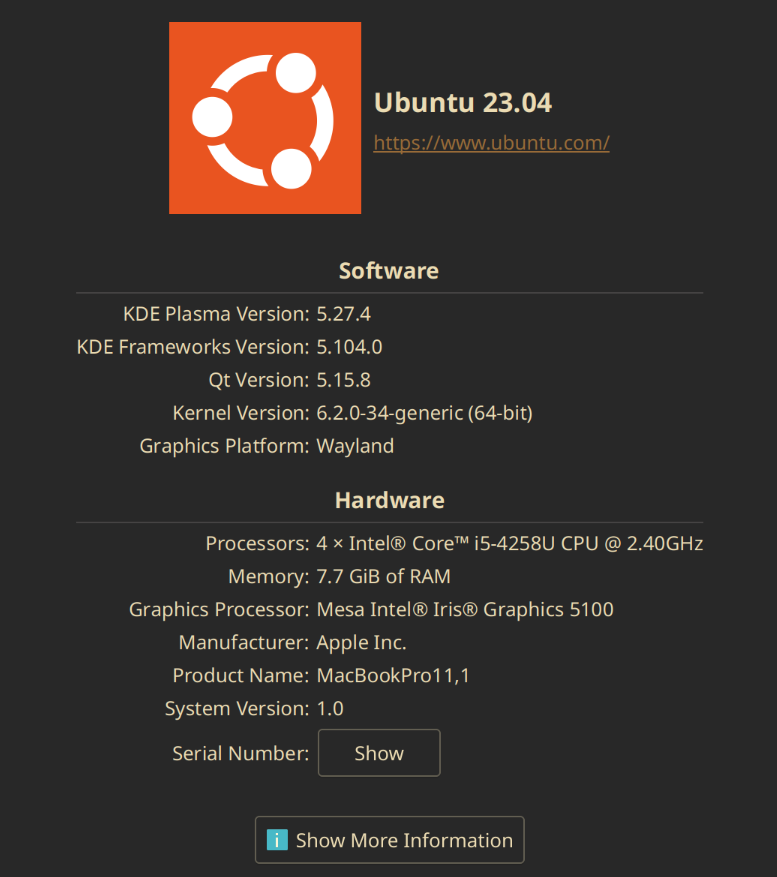Recently I had to return the laptop from my workplace, and was briefly left without a working laptop. Luckily (that’s what I thought at the time), we had a spare old 2013 macbook laying at home with an upgraded battery and a 256 GB SSD. The only problem was – it had MacOS installed. Now, I don’t really have a problem with using MacOS, in fact I had to daily-drive it for the past 8+ years, as most of the time I was using a work-issued laptop, which unsurprisingly ran MacOS. But this time I thought, wouldn’t it be fun to try and install a working Linux distro on this old macbook? I mean, it’s not like I have anything better to do on a weekend, right? What followed was a journey of pain, suffering, surfing 8 years old forum posts, with occasional glimpses of hope and joy, which made the entire experience worth it. Some of the problems I encountered were really Mac-hardware specific, while the others had to do with the rather early stage of Wayland protocol and the HiDPI support in general in Linux (worsened by the disinterest of corporate software developers in spending at least some time on making sure their product works on not-so-widely-used OS-s).



I have a late 2011 that I might be interested in doing this to. Any practical advice on avoiding your suffering?
Like the other reply suggests: look up which drivers you got (mainly the wlan, bluetooth and the camera), and see if WL or facetimehd support those. It wasn’t that much of a pain with the drivers though. Also, find out whether you have the “over the internet recovery”. If not, I would probably avoid deleting the recovery partition, and opt for a dual boot (or manual partitioning).
Thanks, I appreciate it! I’m happy for a dual boot and for no camera, so here’s hoping for the rest.
Look up which distros come with drivers/documentation for your hardware (different for many MacBook versions) especially the WiFi/Bluetooth chipset.
Don’t try anything fancy, unless you have a surplus of life energy and time to waste.
Excellent, thankyou! I was just going to throw ubuntu at it unless I really needed something else because of the potato specs, so hopefully drivers are already sorted.
Noted. I would be pissed to not have that working.
No chance, I’ve been burnt by my unix arrogance enough times to not want to try it on proprietary hardware. Until now I assumed even getting Linux on there was too fancy, I still remember other people fighting for weeks with their hackintosh a decade ago.
Same here, haha. As long as you stay away from ideas like “compiling your kernel from scratch” you’ll be fine.
I recently installed arch on my late 2011 MacBook pro, pretty much everything worked out of the box except wi-fi. The broadcom-wl-dkms driver ended up working the best and without disconnections.
I really recommend it, the performance really surprised me. It’s at the very least 2x faster than MacOS. It really brought life to the laptop, it was unusable before that.